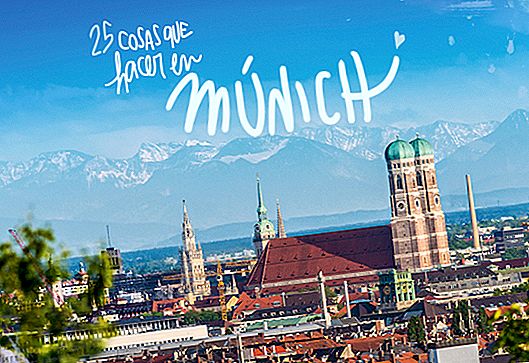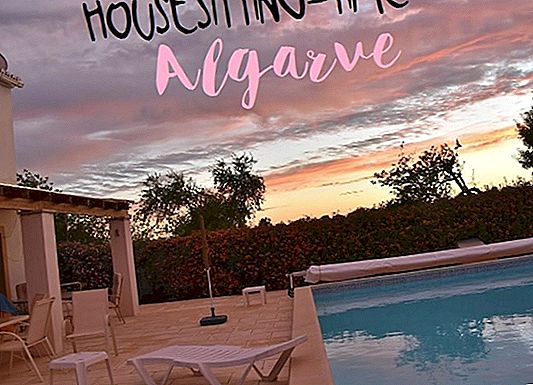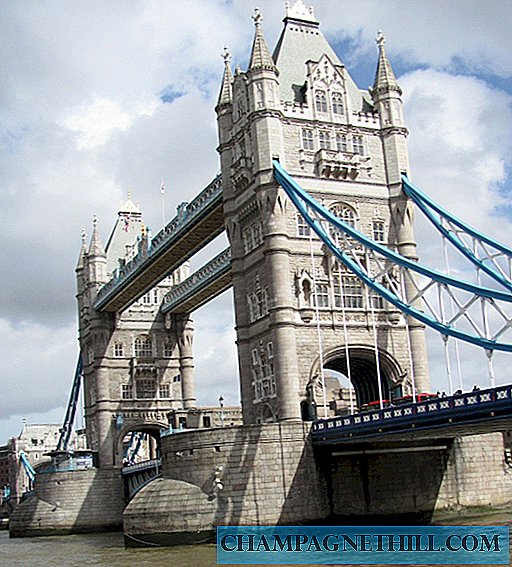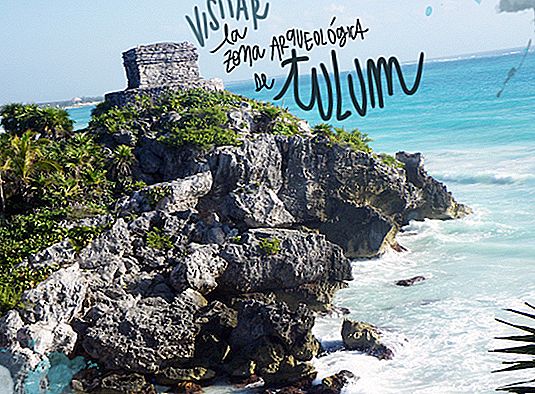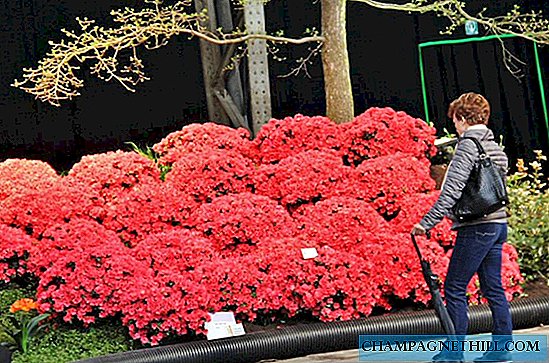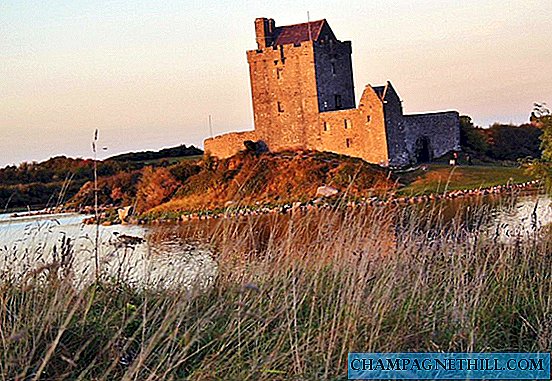Make a Kruger safari for free It is the main reason why many travelers end up choosing South Africa as their holiday destination. And although we always say that South Africa is much more than the Kruger, we have to confess that after our experience, this free safari is one of the most incredible experiences in the world, which has made it one of the places to see in South Africa essentials.
Taking this into account and after publishing the post "Visiting the Kruger National Park", in which we focus on the different areas of the park, accommodation and various tips for your stay, in this post we want to focus on the experience of making a Kruger safari for free, moments that we are sure, you will not easily forget and they will give you scenes of a documentary.
Areas in which to do a safari in the Kruger
The Kruger is one of the most important parks in the world with an area of 2 million hectares, 350 kilometers high and 60 kilometers wide, making this one of the most incredible places in the world where you can see the Big 5, the African elephant, lion, leopard, rhino and buffalo, plus hundreds of animals for which the Kruger is his home.
Taking this into account, it is convenient before making the trip, assess what areas you want to focus on to make a Kruger free safari and thus have a more or less clear idea of the places to visit.
Something important to keep in mind when making a trip to Kruger park is that this is home to 80% of the world's population of rhinos, an endangered species, due to the constant threat of poachers. These often enter the nearby border with Mozambique, with the data of their locations by photos that are published on social networks. That is why in South Africa all travelers are asked not to share images or videos and much less their locations to prevent poachers from locating them.
Based on our experience after visiting the Kruger National Park for 9 days, we want to leave you with what have been for us the best areas in which to do a safari, taking into account the sightings and scenes that we have seen in addition to of course, the information General of the park.
As you will see all of them are located in the central and southern part of the park, which are the ones with the highest concentration of animals and therefore the most recommended for a free safari in South Africa.
Crocodile bridge
This area, in which the Crocodile River stands out, is one of the most interesting in which to make a Kruger free safari, since it is relatively easy to see packs of lions and rhinos.
Featured Roads:
- S25 (unpaved) bordering Crocodile River until more or less the intersection with S108.
- S28 (unpaved) to Lower Sabie where leopards and cheetahs are often seen, as well as lions.
- H4-2 (paved) to Lower Sabie. This was one of the roads that gave us the most joy since it was here that we enjoyed several unforgettable scenes such as a pack of lions that passed by the car and a leopard with an impala, with which we were waiting for more than 3 hours to see it next to the car.

Lion in the Kruger Safari for free

Leopard
Lower sabie
This area, located north of Crocodile Bridge, stands out for being the place where the Sabie River passes and where there is some facility to see lions, hippos, elephants and leopards. For us Lower Sabie next to Crocodile Bridge were the areas in which more special scenes we saw.
Depending on the days you have, we recommend spending one or two nights in this area, as we believe, it is one of the most productive to make a Kruger free safari.
In our experience this is the perfect place to combine safaris with tranquility, since both in the safaris and in the camp you will have the possibility to enjoy an endless procession of animals that come to drink the Sabie river.
Featured Roads:
- S29 (unpaved) at the crossroads with the H10 and in the area of the Mlondozi viewpoint tend to see cheetahs and is the area where a cheetah with its young has been seen for months. We had a two-hour scene, brutal!
- H10 (paved) in the direction of Satara is a very productive road where you can see felines as well as many other animals.
- H4-1 (paved) in the direction of Skukuza, so they say there are many sightings, although we did not have much luck in this area.

Cheetah with young on a free safari in the Kruger

Elephants in the Kruger

Safari for free in the Kruger
Skukuza
Known for being the area most frequented by tourists, Skukuza is known for being home to many animals despite the crowded area. In our case, it was the area where we saw the least animals and also, the only one where we found a camp that was too crowded, especially at peak times of the day, since it is also the base of organized groups to go to the souvenir shop and restaurants.
With this in mind, we believe that Skukuza is one of the dispensable areas of the Kruger, which you can come to pass one day from Lower Sabie, making only one area.
Featured Roads:
- H1-2 (asphalted) in which there are usually sightings of felines.

Hyena in Skukuza

Ñues in Skukuza
Satara
Known for being a land of felines, this area is another of the busiest in the Kruger, where lions, leopards and cheetahs tend to be seen as a space with little vegetation and very flat.
Featured Roads:
- H10 (asphalted) from Lower Sabie in the direction of Satara, is one of the most productive in terms of cat sightings.
- Nkumbe View Site Viewpoint: on the H10 road towards Satara, this viewpoint is one of the most beautiful in the Kruger Park.
- H1-3 (paved) is the road on which the H10 is transformed from Lower Sabie as it passes through the Tshokwane viewpoint, which can be a perfect place to go to the bathroom and stretch your legs on this path.
- S100 (not asphalted) that runs parallel to the N'wanetsi River is well known for the sightings of felines and the viewpoints along the road.
- S41 (not paved) following the S100 you can continue on the S41 to make the complete loop through this area.
- H7 (paved) also well known for cat watching in the area.

Lions in the Kruger

Giraffe
Olifants
Known for being the camp with the best views of the Kruger, this is also an area of felines, although at first glance it may not seem like it, since the vegetation is much higher than not in Satara. Here we had a couple of encounters with leopards that left us speechless.
Featured Roads:
- H1-4 (paved) from Satara to Olifants, is one of the best known for its sightings.
- S44, S93, S92 (not paved) although we didn't see many animals, the views are worth it.

Leopard breeding

Leopard

Kruger Safari
We leave you a map of those that are for us, according to our experience, the recommended areas to do a Kruger safari for free.
How many days of safari in the Kruger do you recommend?
As we have explained in the trip to South Africa in 25 days, although this is not essential, we would recommend you visit and do the safari in the Kruger at the end of your trip, since we are sure that they will be the icing on the cake and making them at the end of the trip will make South Africa for free a trip that goes at all times less to more.
After this introduction and always under our experience, we would not recommend you to come to the Kruger less than 4-5 days so you can enjoy a complete experience in the park. With this in mind, we would divide the stay into the following areas:
- Crocodile Bridge 1 night
- Lower Sabie 2 nights
- Satara 2 nights
If we had 4 days, we would remove one night in Satara, leaving 1 night in Crocodile Bridge and 2 nights in Lower Sabie.

Lions with young in the Kruger
Where to stay for a Kruger safari for free
The camps in which to stay in the Kruger to do a free safari depend a lot on the days you have, but in general, we would choose, as we said before, for the southern part of the park, focusing on Crocodile Bridge, Lower Sabie and Satara.
You can find much more information about accommodation in the Kruger in the post "Visit the Kruger National Park".

Bungalow in Lower Sabie
Rental car for a safari in the Kruger National Park for free
Another of the most important aspects to do a free safari in the Kruger is the rental car.
Although in the Kruger you can do safaris with a normal tourism in a safe way and it is totally feasible, it is advisable, whenever it enters your budget, to have a higher car that allows you to have more visibility when it comes to seeing animals.
Likewise, having a large and comfortable car will make the long hours you spend driving or waiting for a scene much more bearable.
It is important to keep this in mind when renting the car in the Kruger, since sometimes if you extend the budget a bit, you can find much more comfortable options.

Rental car in the Kruger
If you want to know more about this, be sure to read the post "Rental car in South Africa", where we detail all the important aspects of this topic.
Tips for driving on a safari in the Kruger
Although in most cases common sense will tell you what to do when driving through the Kruger, we leave you a selection of tips for driving on a safari in the Kruger National Park that we believe, can help you.
- The paved road speed is 50km / h and the unpaved road 40km / h. Always respect it to avoid accidents or animal abuses.
- It is strictly forbidden to drive outside the established hours. If you have a problem, you must justify it to avoid the fine.

Kruger schedule. South African National Park Image
- In case you have a problem with the car, never leave it if you are not in an area where it is allowed. If this is not the case, call the emergency number provided at the camp to come and help you.
- Have emergency numbers written in a visible place or on the phone book.
- Try to always carry water and a snack in the car, in case you need them at any time. You never know when an incredible scene will come and how long you should be there.
- Keep a safe distance with cars and if there are any sightings and there are many cars, try to keep calm and go slowly.
- You should always keep a safe distance with the animals, wait until they are calm and see that they have taken a position, to turn off the car's engine.
- Similarly, if you are driving, do it slowly so as not to scare them and when they have settled, turn off the engine.
- With animals such as rhinos or elephants, observe their attitude and if they have young. If this is the case, do not cut them off on the road or get too close, as they can be aggressive to protect them.

Elephants in the Kruger
- In the Kruger, if you want to see animals, it is preferable not to cover large distances and go slowly, so you will have more opportunities to see animals.
- Whenever you can approach the rivers or pools of water. They are usually the places where more animals are seen.

Baby elephant
Kruger Security
Security in the Kruger is something very important to keep in mind. With personal security you will not have any problem, since it is a very safe place and although it is advisable to be cautious, it is very difficult to have some setback.
What you have to be careful with is safety with animals:
- Always respect the traffic rules.
- Maintain safety distances.
- In the camps you will see that the elements of the kitchens of the bungalows are protected with bars, as are the garbage. Do not leave anything open and above all, no food. In many camps there are baboons (monkeys) that are dedicated to Steal all they can.
This also happens with other animals such as hyenas that, due to the food that tourists leave outside the bungalows, come at night to look for food, with the danger that this entails.

Bungalow in Skukuza
And although the previous thing that we commented is very important, if you take into account these simple tips and use common sense, it is only necessary to enjoy one of the most incredible places in the world.
Tips for doing a free safari in the Kruger
In addition to the tips for driving in the Kruger and about safety in the Kruger Park, we want to leave you a series of general tips to do a free safari in the Kruger that we know, it will be one of the unforgettable experiences you will have on this trip.
- If you want to take memories of the Kruger in the form of photography, we advise you to take a good TV, minimum of 400. In case you do not want to buy it, we know that there are travelers who rent them in photography stores.
- Do not forget the binoculars. They are essential to see what is happening at a certain distance.
- As we mentioned before, do not lose patience. It is better to go slowly and travel less stretch, than go fast and see nothing.
- Keep in mind that as much as they tell you that in the Kruger you are going to tired of seeing animals, this is not always the case. There will probably be days when for kilometers you don't see anything, or you only see impalas and zebras and suddenly, you find the scene of the day. Or days in which you see many animals. Nature is unpredictable. Do not stress and enjoy all the moments.

Cheetah
- Try to enjoy at least one day of sunrise and sunset. It is worth getting up early to enjoy one of the most incredible moments of the Kruger, as well as being one of the moments when animals are most active.
- We mistakenly thought that to see animals would be much better unpaved roads than asphalted roads. This is not always the case and in our case, for example, we end up seeing the most brutal scenes on paved roads.

Lioness
- Another important thing for sightings is to consider several factors:
- Informative panels of the camps: in them you can see the sightings marked with colored pushpins, less rhinos that are not marked to avoid poachers. You can see the sightings of the day and the previous day. Given that many animals are territorial, it is very likely that the next day they continue through the area.
- The word of mouth: Take advantage of the restaurant or shop to ask people what they have seen and in what area. You can also do this on the road, if cars run slowly. You just have to stand next to someone and ask if there is anything interesting on the road 😉
- Stop whenever you see stopped cars: If you see more than two cars stopped, something is happening. Many times it is something that happens at a certain distance, but other times it is happening next door and if you don't ask, you wouldn't see it. We were alone in front of a leopard in a tree, which practically did not look and if we had not told the passing cars, we are sure that they would not have seen it.

Baby cheetah

Leopard on tree
- Latest Sightings application. You can download it on your mobile and go watching the sightings with location of the people who are uploading them and in which you can also make your contributions. They also have a WhattsApp group in which you can ask to be included and watch the sightings of the day. Keep in mind that many times there is no coverage, so these are not updated at the moment.
- Never, under any circumstances give to feed the animals. Doing so only causes you to change their behavior and become aggressive and dependent, something that eventually ends their death, since they cannot be in the Kruger.
- Believe it or not, in the camps you can often enjoy the best sightings. There are some, like Skukuza, in which there are some very close ponds in which elephants are usually seen. Others like Olifants or Lower Sabie, have incredible views of the river, where you can see animals practically throughout the day.
And at night, don't forget to take the flashlight to get close to the perimeter. We are sure it will be an unforgettable experience.
Guided Safaris in the Kruger
In all the main camps, at the reception, you can reserve a place to do different types of guided safaris, depending on what you are looking for. The most recommended and demanded are:
- Safari at dawn (3 hours) R331.28
- Safari at sunset (3 hours) R331.28

Kruger activities
Although as we always say, in the Kruger safaris things can change a lot, since nature is unpredictable, our experience doing the Sunset Game Drive was not as good as we expected, since in the 4 hours it lasted, we only had one Amazing scene, which was a leopard with an impala in a tree. In this case, the guide only agreed to go (we knew from some rangers that he was in that location), when it was night, so we had virtually no chance to see him.
Taking this into account, we understand that for them the main thing is to show all the animals that they can, stopping to give many explanations with giraffes, zebras, impalas ... etc, when these types of animals are those that can be seen in a relatively easy way, on a free safari in the Kruger.
Having this as a reference, we would make a unique guided safari, at sunrise or sunset and the rest of the safaris for free, since you can see many more animals in addition to being able to dedicate to each scene the time you want, something we believe, is A must to enjoy on a safari in the Kruger Park.
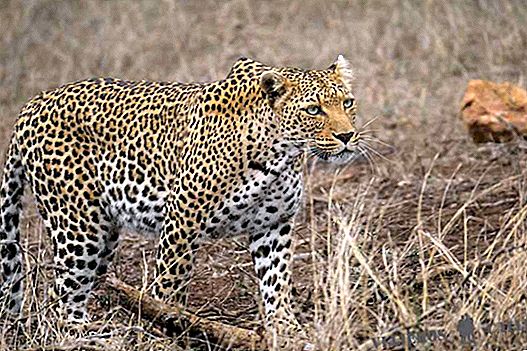
Leopard

Baby cheetah
What animals can I see in the Kruger
Taking into account that the figures are scandalous with 147 species of mammals, 500 of birds, 114 of reptiles, 49 species of fish, 34 of amphibians, 227 of butterflies and 336 of trees, we are sure that in the Kruger you will see yes or yes animals. Although if we use the counting figures of some animals, this may be less likely with some species:
5000 white rhinos, 350 black rhinos, 4900 aquatic antelopes, 150 reddish antelopes, 37,000 buffaloes, 28,000 zebras, 120 cheetahs, 2000 lions, 8,000 giraffes, 3,000 hippos, 1000 leopards, 13,000 elephants, 9,000 ñues, 4,000 wild boars, 2,000 hyenas and 1,500,000 impalas
That is why we advise you to take it easy, be positive, follow the advice we have given you and, above all, enjoy the Kruger safari for free.

Giraffe

Impalas

Kruger Safari
See the Big Five in the Kruger
It is its origin this was the way in which hunters referred to the 5 most dangerous wild animals for hunting in Africa. This expression has been maintained to this day and they are today for many travelers, the 5 most special animals that can be seen in a safari in the Kruger, to which it is added, the cheetah as an extra with which we are sure , you will love to match.
African elephant
With just over 13,000 specimens in the Kruger, the African elephant is a relatively easy-to-see animal, although it is always necessary to maintain a safe distance for its characteristics, especially if they are with young, since it is usual to charge against cars , although normally only as a deterrent method.
Keep in mind that an elephant must spend almost all day eating and drinking to stay, so you may always see it doing either of these two things.
We were lucky to see an uncountable number of them, many with young, who offered us some impressive images

Elephant
Leopard
This is one of the most beautiful animals in the world, but also one of the most difficult to see in the Kruger, for having a skin and a perfect structure for camouflage. In nocturnal habits, the leopard is more complicated to see during the day, although it adapts very well to the environment, so it can be seen in a very wide area of the Kruger.
Keep in mind that leopard cubs are hard to see since their mothers protect them a lot to avoid predators. We can say with our mouths full that we had the great luck of seeing 5 leopards during our stay at the Kruger, the last one with a baby that walked in front of our car for 2 hours, giving us incredible and unforgettable images.

Leopard

Leopard on tree

Leopard breeding
Lion
Considered the largest feline on the continent, the lion is an animal that usually lives in packs of more than 30 individuals and that lives in all areas of the Kruger, so in a way, we can say that they are relatively easy to see which also tend not to be intimidated by cars or people.
In our case, we were incredibly lucky to see a couple of hunting scenes, although far away and see lions with young, but also at a distance that we could only observe well with binoculars.
But, without waiting for it, a couple of days we met by chance with a couple of scenes, in which the lions suddenly passed in front of our car, giving us some images that we will never forget.

Lioness with baby

Lion in the Kruger

Lion
Rhino
In the Kruger we can find white rhinos, recognizable by their large and wide snout, which are usually kept in the open savanna to eat and black rhinos, with more pointed snouts, which are more difficult to see since when eating from scrubs, they are usually more hidden.
We in the Kruger were only lucky to see two rhinos and far away, so the experience we had in Hlane Park, one of the places to see in Swaziland, we remember as one of the most brutal in South Africa for free.

Rhino
Buffalo
Although it may not seem like it, buffaloes are one of the most dangerous animals in the Kruger and they are extremely dangerous when they are threatened even facing lions, as we saw a couple of times doing the Kruger safaris.
Despite living in herds of hundreds of copies, it is not always easy to see them in the Kruger, so when you see them nearby, take your time to enjoy the moment.

Buffalo
Cheetah
Despite not belonging to the group of Big fiveWe want to make special mention of the cheetah or cheetah, another of the most wanted animals in the safari in the Kruger, which we are sure, will give you spectacular moments if you are lucky to see it.
Known for being the only carnivore capable of passing a running impala, the cheetah is able to reach 110 kilometers per hour over short distances.
We had the great luck of crossing with more than 10 cheetahs, some seeing them further than others, although one of the scenes was really one of the brutal moments of the Kruger safari when we could enjoy 2 hours with a female with 4 puppies that They delighted us with all kinds of games in front of us.

Cheetah

Cheetah with young
 Day 23: Kruger - Panorama Route in South Africa: Blyde Canyon, Three Rondavels, Lucky Potholes, Berlin Falls and Lisbon Falls - Graskop
Day 23: Kruger - Panorama Route in South Africa: Blyde Canyon, Three Rondavels, Lucky Potholes, Berlin Falls and Lisbon Falls - Graskop
